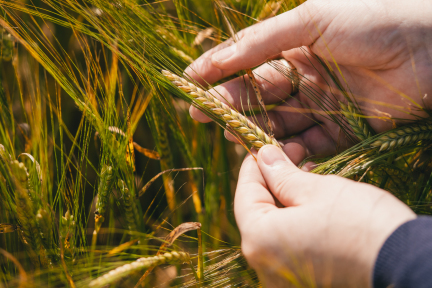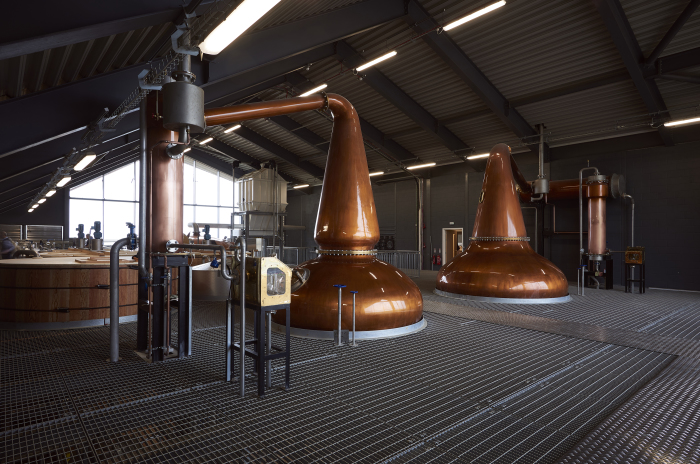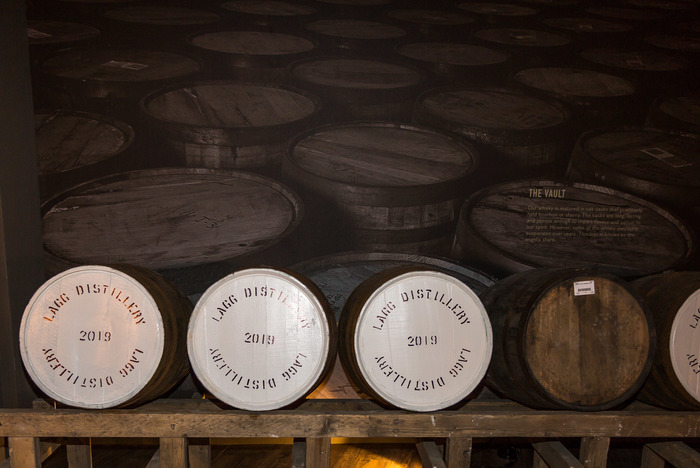What is single malt whisky?
Here on the Isle of Arran, surrounded by the clear waters of the Firth of Clyde, we take immense pride in crafting award-winning single malt Scotch whisky. But what exactly makes a whisky a single malt, and how is it different from other whiskies? Read on, as we reveal all there is to know about single malts.
What is single malt whisky?
Single malt whisky is whisky produced at a single distillery and made using only malted barley (as well as water and yeast).
But if we are talking about single malt Scotch whisky - which most people inevitably are when you mention single malt - then there are actually a few more regulations involved.
What is single malt Scotch whisky
People sometimes use the terms malt whisky and Scotch whisky interchangeably, however, they aren’t the same. While all Scotch is whisky, not all whisky is Scotch. To qualify as a single malt Scotch whisky under the Scotch Whisky Regulations, the whisky must meet the following criteria:
- Made exclusively from 100% malted barley, water and yeast.
- Distilled at a single distillery in Scotland using pot stills.
- Matured for a minimum of 3 years in oak casks.
- Bottled at a minimum strength of 40% abv.
- Distilled below 94.8% abv so that it retains the flavour and aroma derived from its raw materials.
Let’s break some of these down further.
Barley, water and yeast

Three simple ingredients that combine to create the golden dram.
The "malt" in single malt refers to the grain used: 100% malted barley. Barley is steeped in water and allowed to germinate, a process that converts starches into fermentable sugars. It is then dried before being ground into grist.
And why barley, you might ask? Well, it’s the Rolls Royce of grains, and it has the perfect structure and properties to make whisky.
Distilled at a single distillery in Scotland…

Unlike blended whiskies, which combine whiskies from multiple distilleries, a single malt can only contain single malt whisky from a single distillery.
As a side note, people often think a single malt only contains an expression from one cask, but this isn’t the case. Single malts will often contain several single malts (different whiskies or different ages) mixed by the Distillery Manager - a quick hello to Graham Omand, who oversees things here at Lagg. A single cask single malt, however, only comes from one barrel.
…Using pot stills

There are two distillation methods for producing spirits: pot stills and column stills.
Pot stills, which are often made of copper, operate on a batch process by heating a fixed amount of fermented liquid. The alcoholic vapour rises, condenses, and is collected. Once a batch is complete, the still is emptied, cleaned and refilled, ready for the next distillation.
Because pot stills are less efficient at separating alcohol from other compounds, the resulting spirit retains more of the volatile compounds (known as congeners) from the raw materials and fermentation process. These congeners are vital for the aromas and flavours characteristic of single malt whisky, and are why single malt Scotch has a richer and more complex flavour profile.
Column stills, also known as continuous stills or patent stills (after Aeneas Coffey, who refined the design in the 19th century), offer a very different approach to distillation. Distillers typically use them for grain whisky production, as well as for spirits like vodka, gin and bourbon. As you might have guessed from the name, they can run continuously, making them far more efficient for large-scale production. These stills remove a greater proportion of the congeners that contribute to the flavour - great for neutral spirits like vodka, but terrible for Scotch!
Aged for 3 years

By law, Scotch whisky must age for a minimum of three years, although many single malts age for much longer. During this maturation period, the wood interacts with the spirit and adds colour, flavour and aroma.
What gives single malt whiskies their unique taste?

With only a few ingredients involved in the production process, you may wonder how whisky makers differentiate the flavours of their whiskies. Actually, there are many ways to do this. The location of the distillery, the source of the water, the type and quality of the barley, the peat used in the smoking process and the shape of the stills; all contribute to the flavour. On top of this, the type of barrels used, as well as the number of years a whisky is aged, can impart very different characteristics.
However, while there are many variables we can control, there’s still an element of mystery of what happens in the cask. Sometimes ‘sister casks’, one filled after the other on the same day, can produce very different flavour profiles and it’s not always known why.
Still, we try our best to control all the variables we can, and that’s how we create the unique flavour profiles of our whiskies at Lagg. For instance, our Lagg Single Malt Corriecravie Edition is matured initially in bourbon barrels before being finished for approximately 6 months in Oloroso Sherry Hogsheads, which produces flavours of dark chocolate, spiced red berries and hazelnut.
Our Lagg Single Malt Kilmory Edition uses Concerto malted barley, is 100% First-Fill bourbon barrel matured and bottled at 46% ABV, which gives it its initial burst of fruit and smoke on the palate and vanilla, long-lasting finish.
Lagg Distillery tour
If you are interested in learning more about how we make our single malt Scotch whiskies, why not visit us for a tour of our distillery, named Distillery of the Year 2023 at the Scottish Whisky Awards. Our expert guides will regale you with the fascinating history of Arran’s distilling past, and you can also sample some of our delicious peated single malts.
Lagg whisky tours
Join us at our award-winning Distillery for a tour and a tasting
Tours and tasting